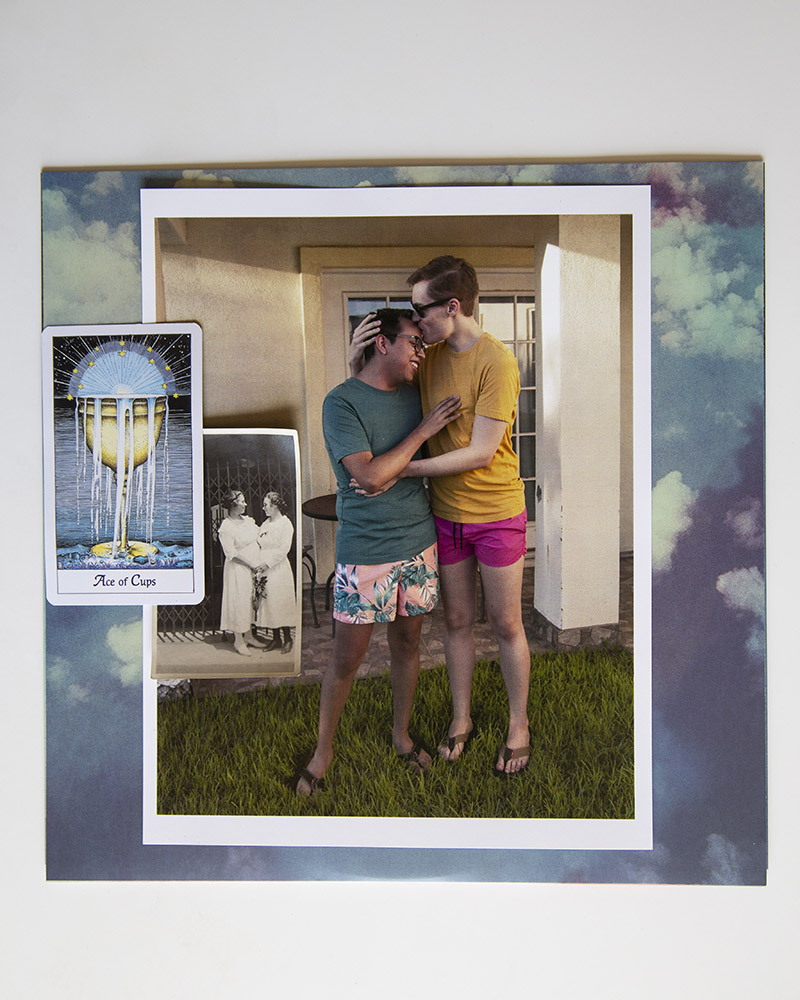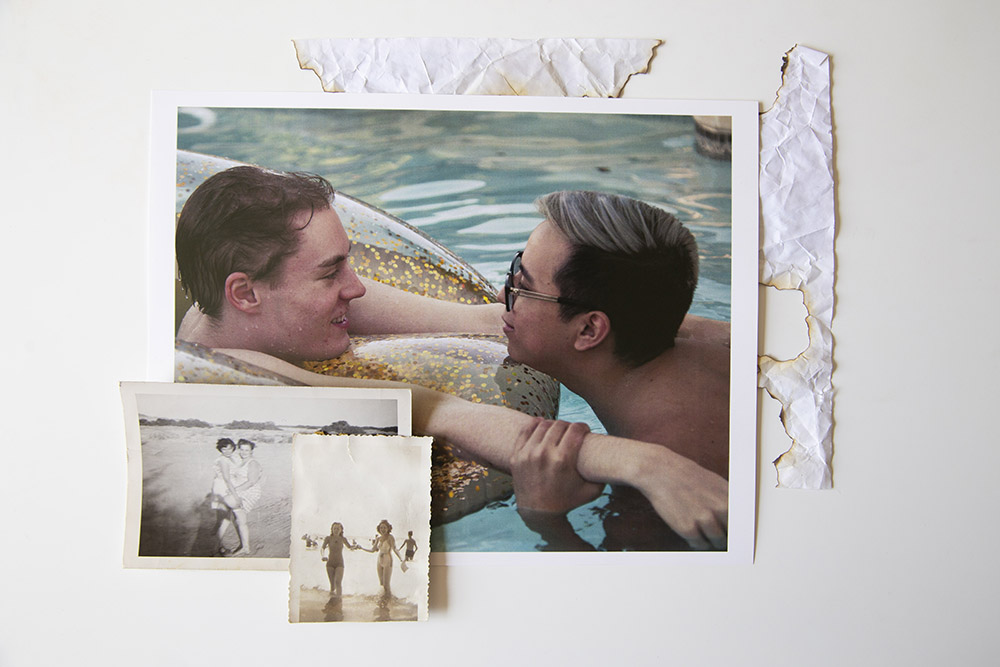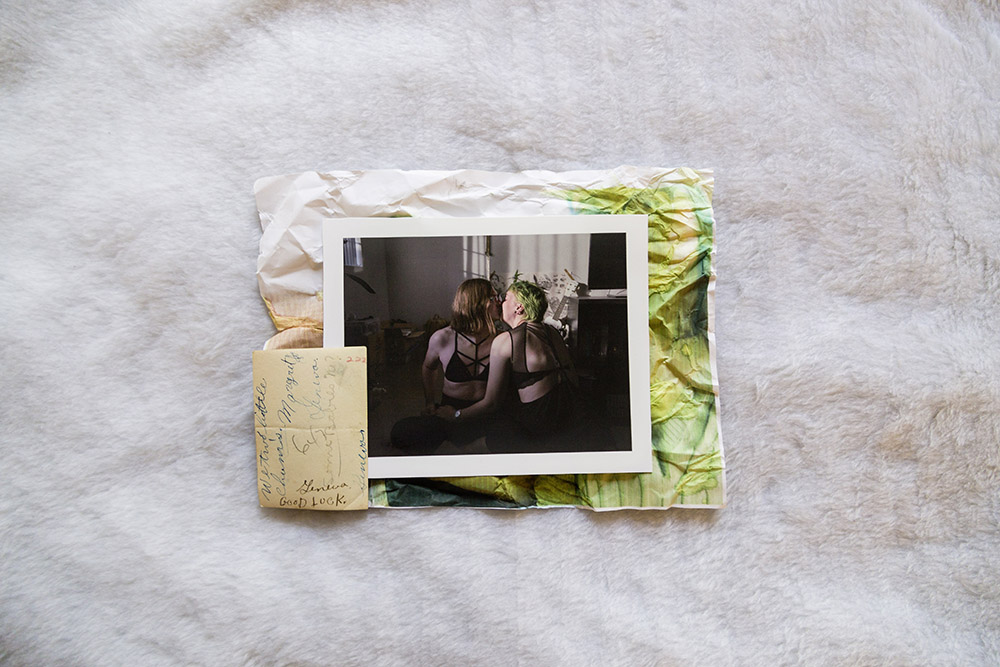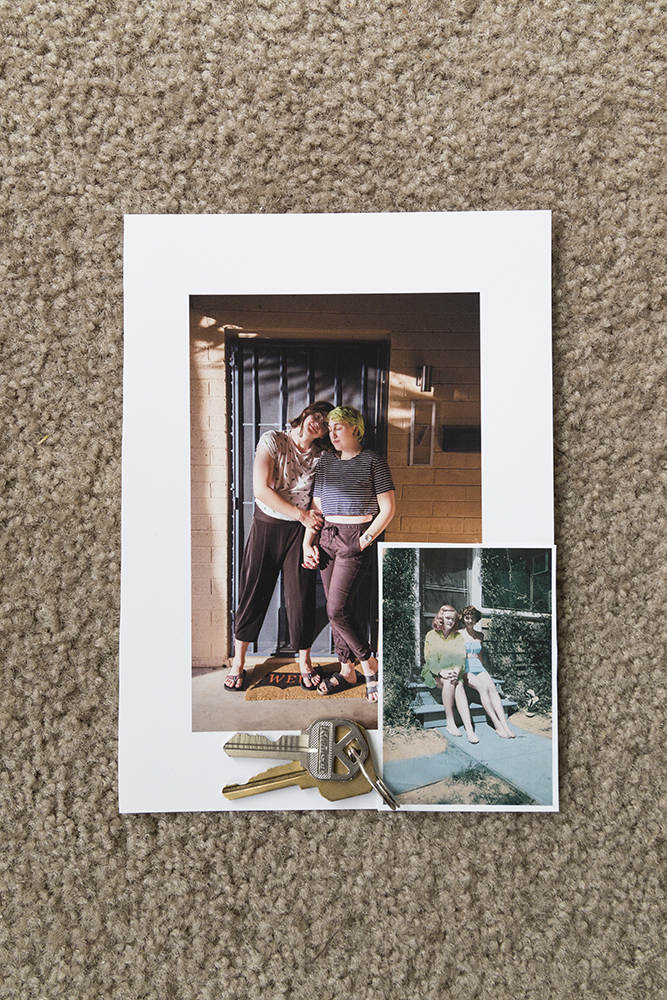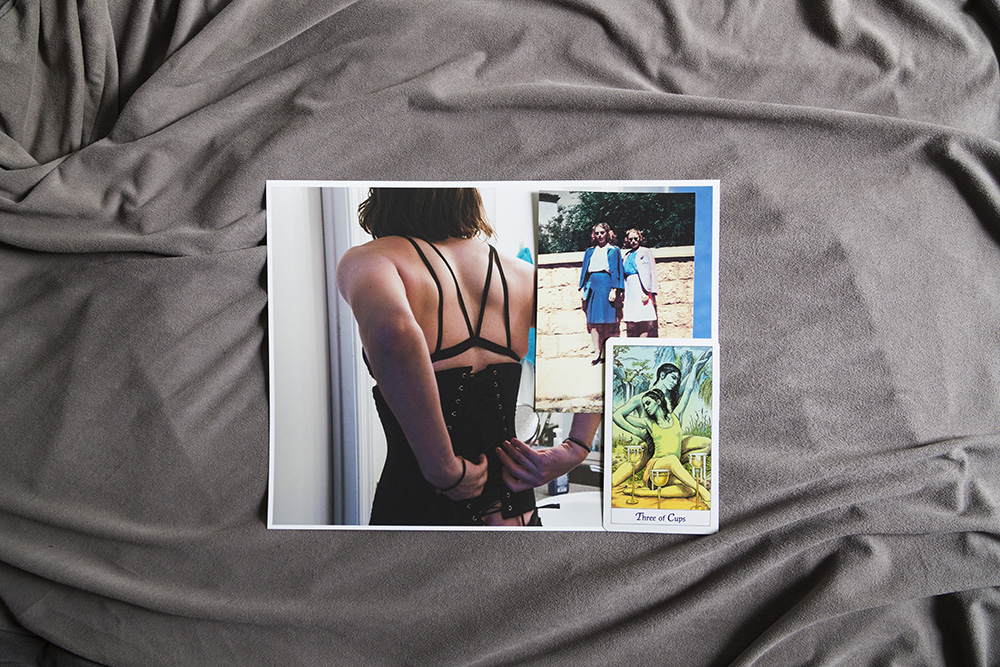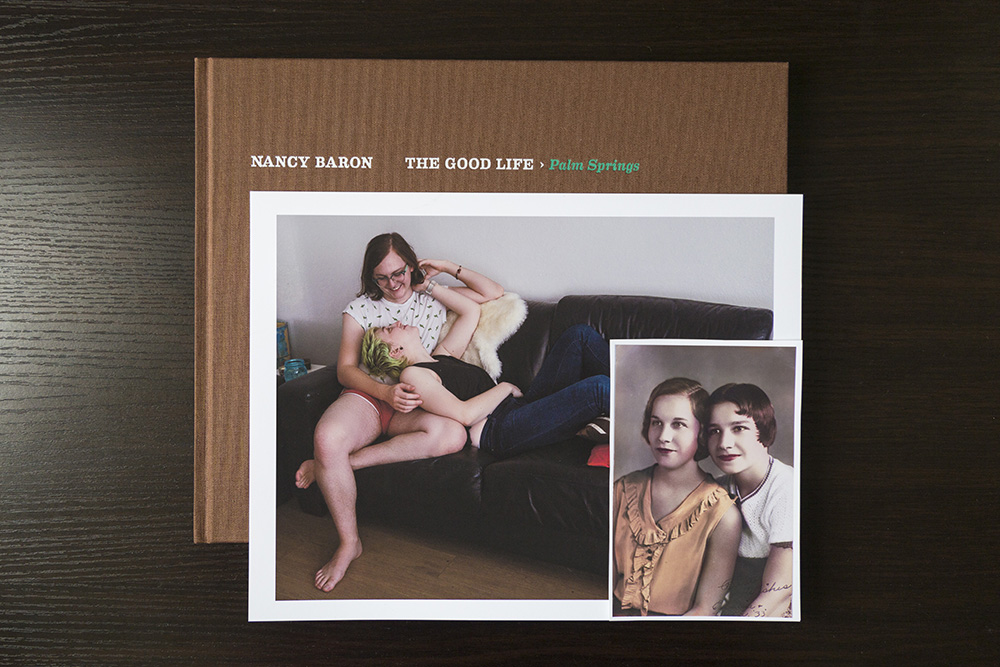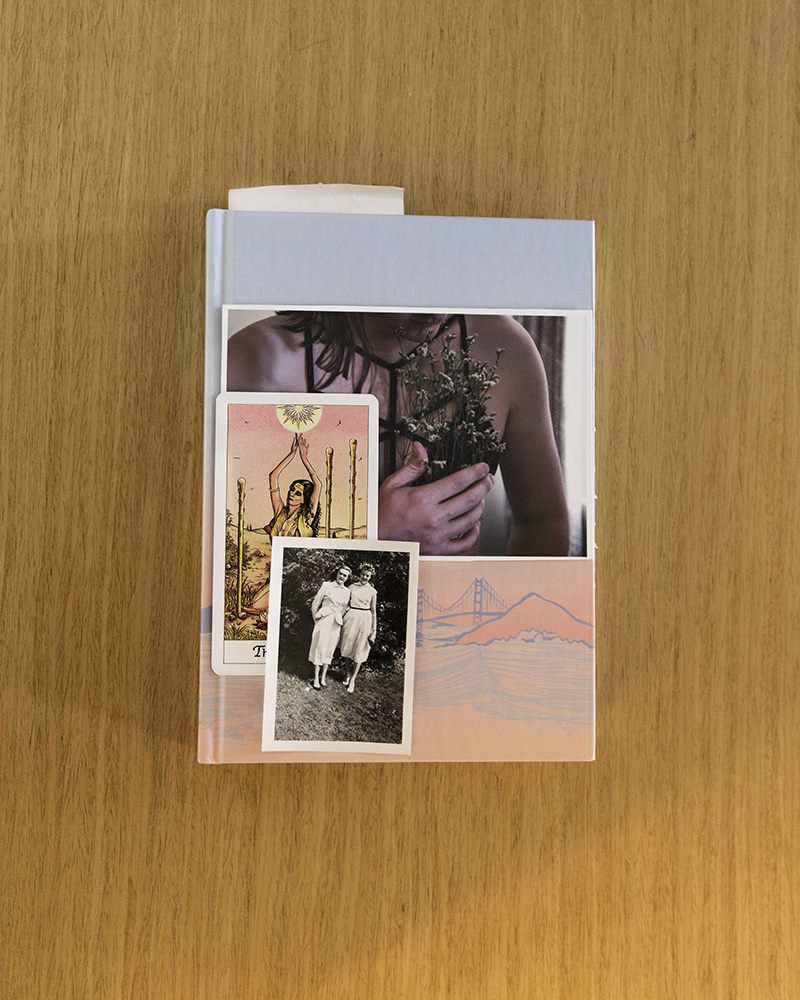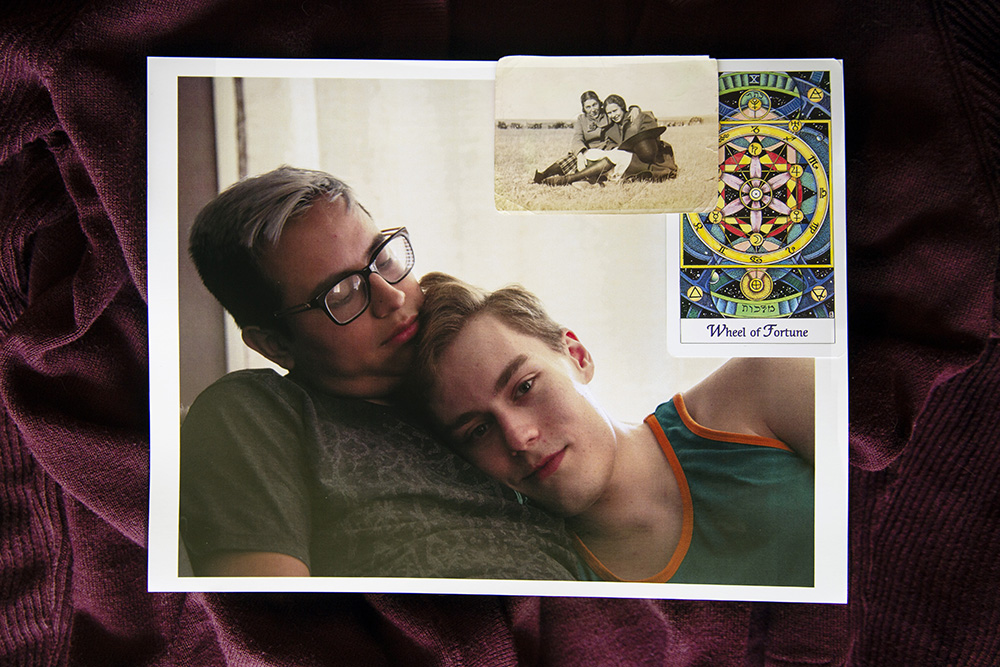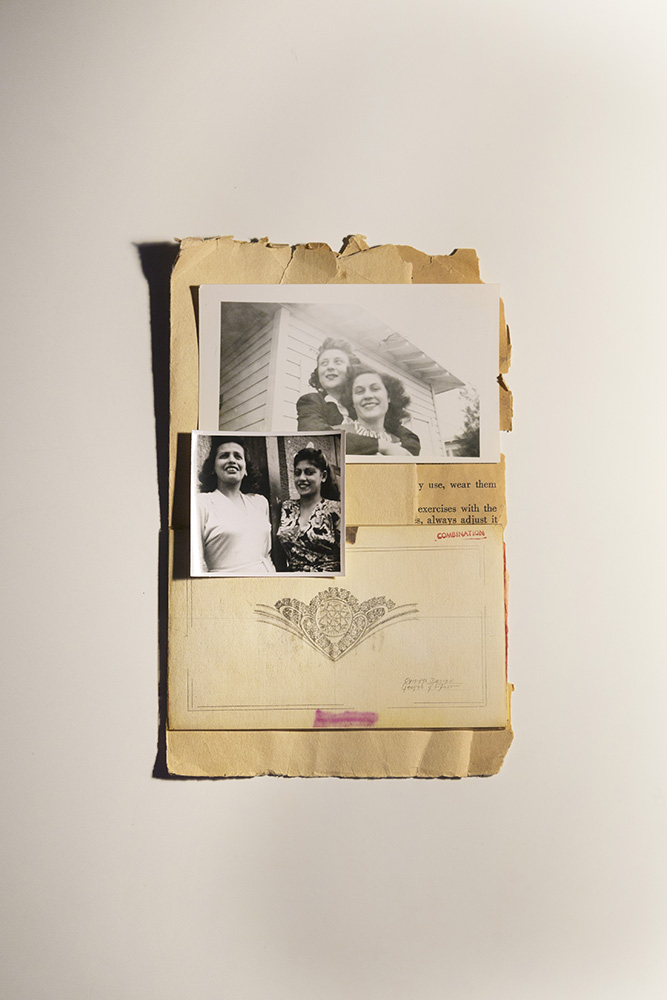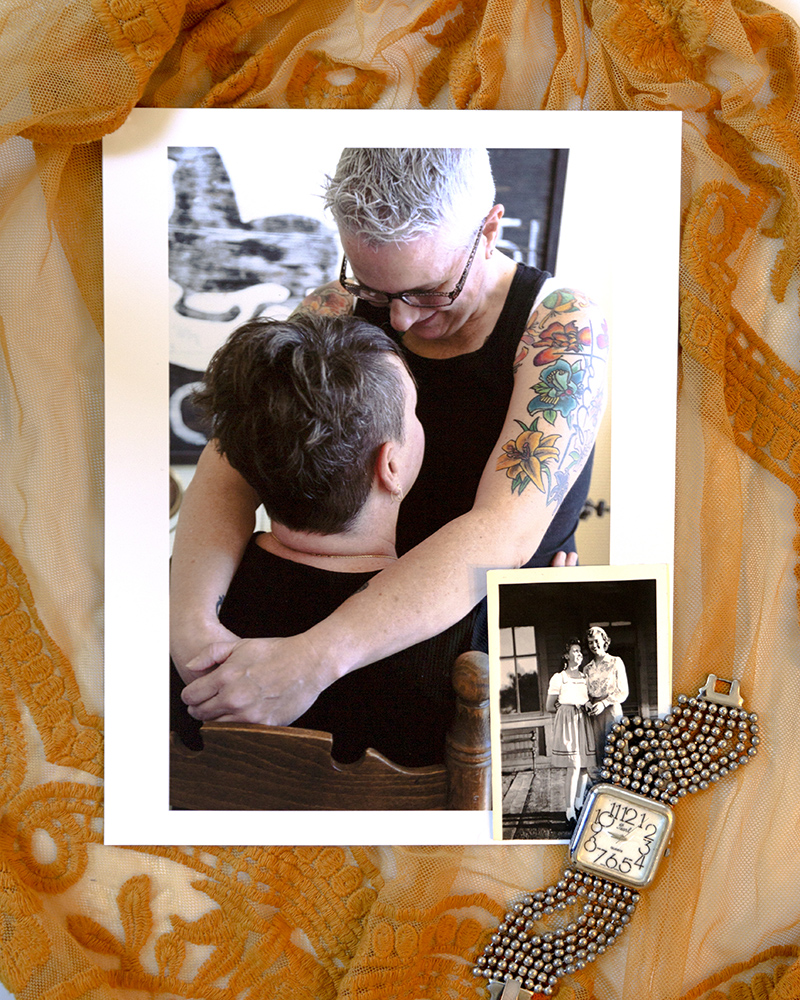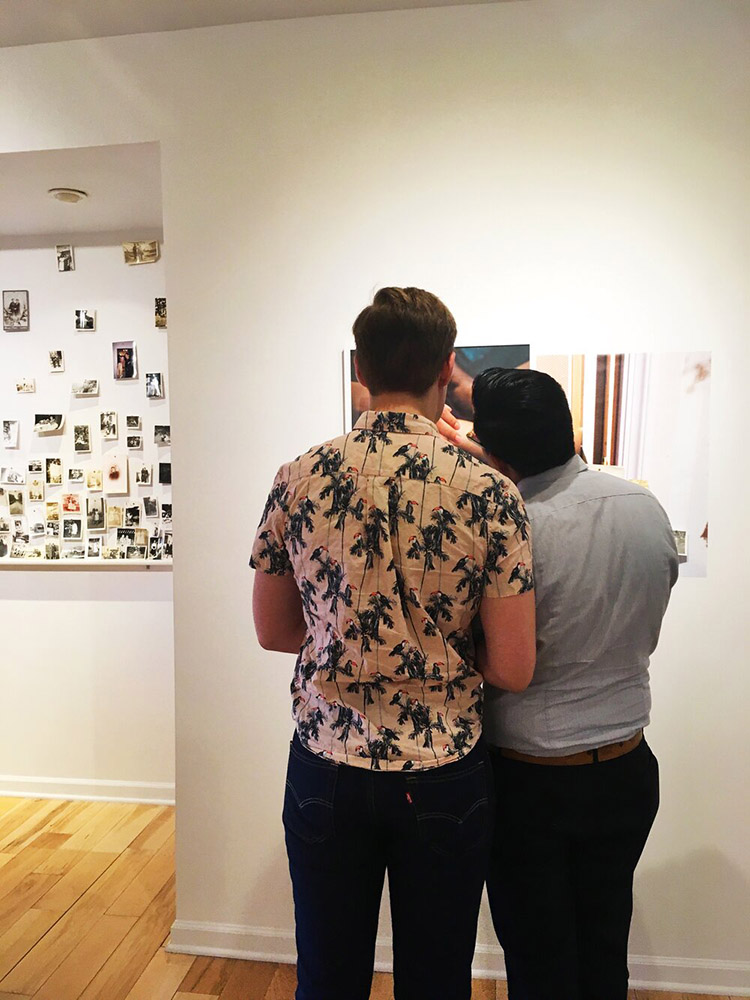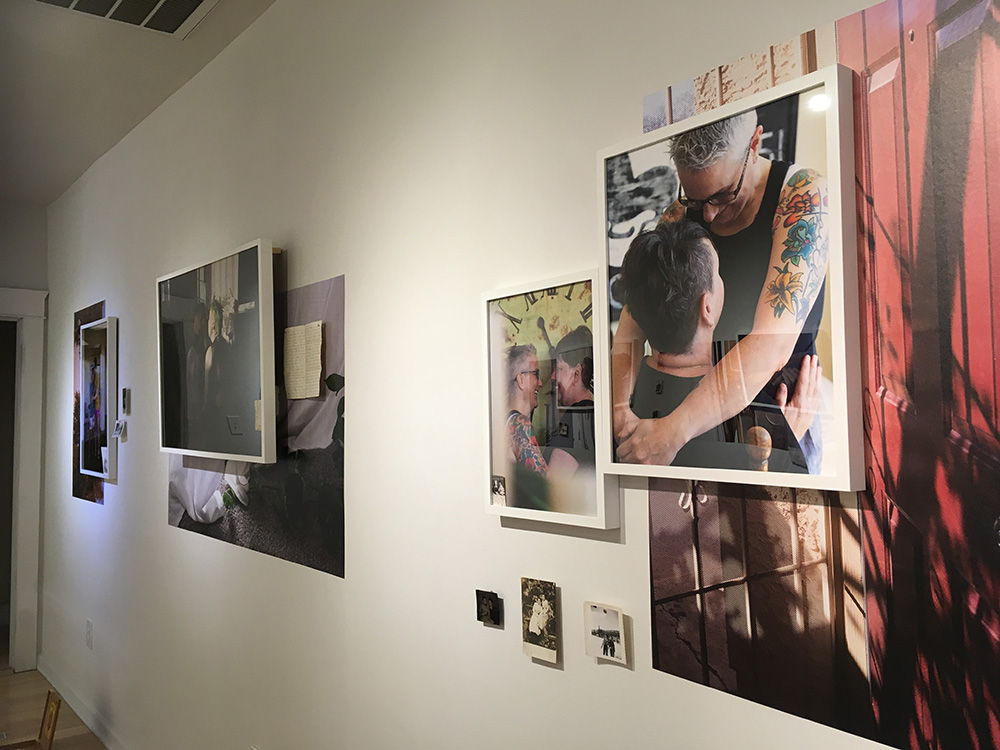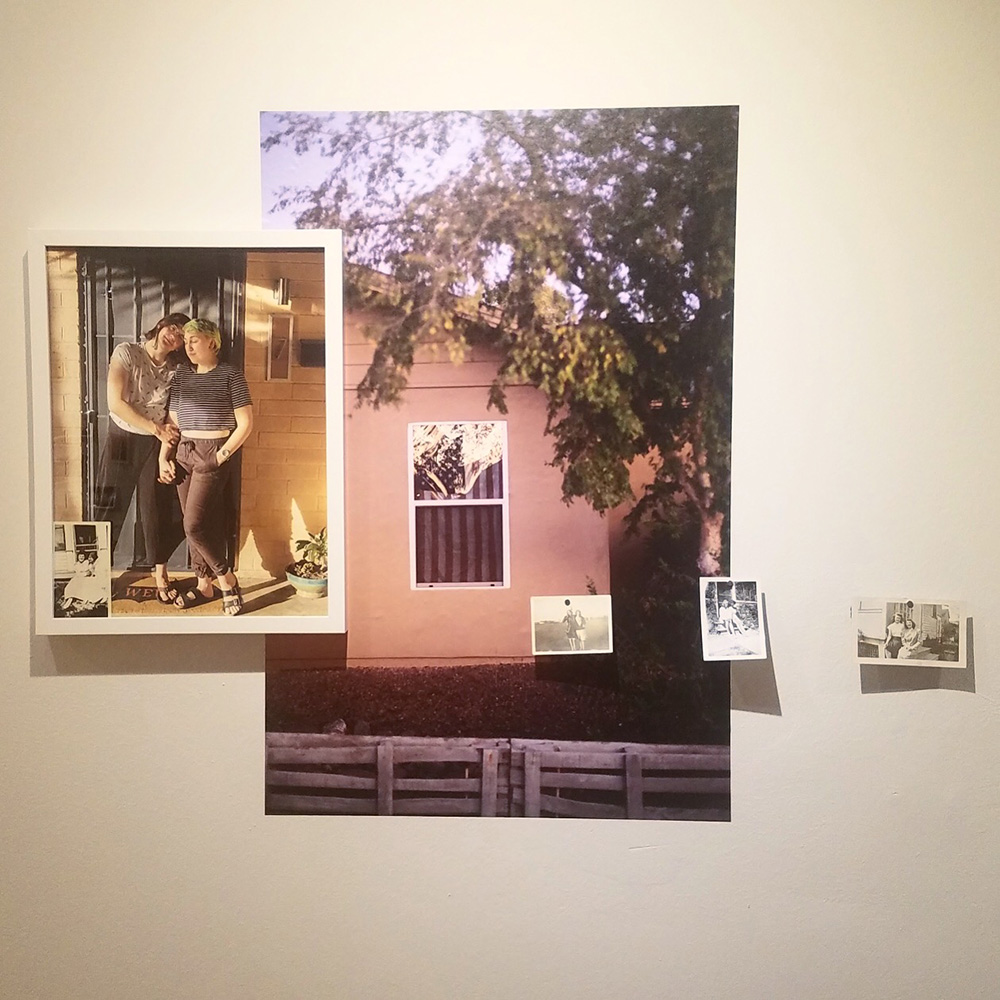Kat Davis: How We Were, and Other Possibilities
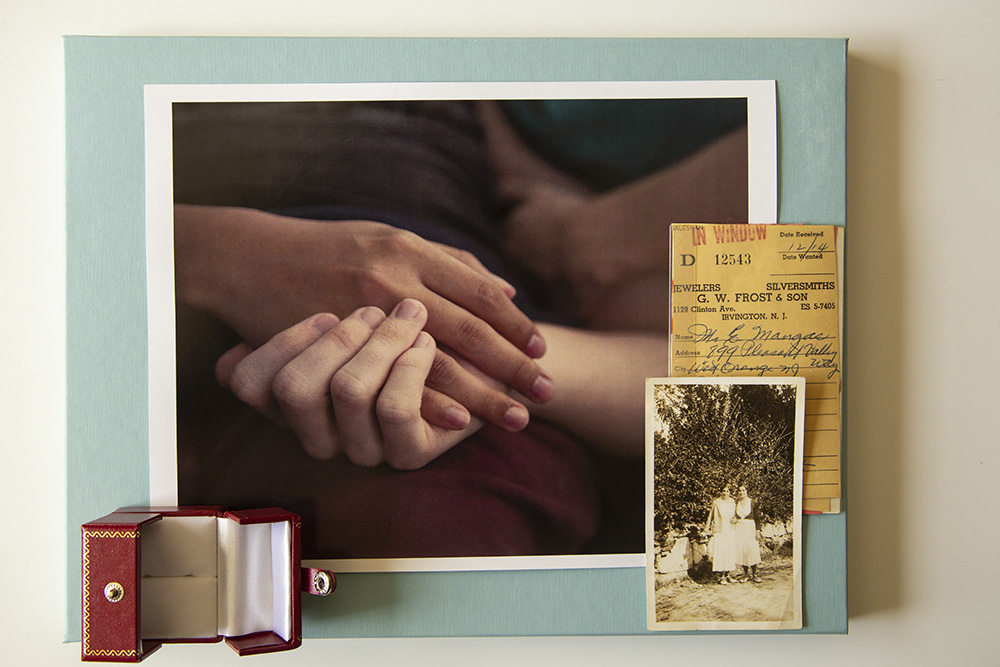
©Kat Davis, Hands
This week, we are excited to introduce five new Lenscratch Content Editors who will be providing expanded perspectives on a variety of topics. I begin today with Kat Davis, an engaging and committed artist who is particularly interested in intersectionality – the convergence of oppressions based on gender identity, sexual identity, race, class, age, culture, education, ability, and more. Her series How We Were, and Other Possibilities, explores the queer legacy by layering vernacular and contemporary capture with artifacts that all combine to tell new stories and create different histories. An interview with Kat follows.
Kat Davis earned her BFA in Photography from Arizona State University in 2017. She is currently co-president of eye lounge, an artist’s collective, based in Phoenix, AZ. Davis uses the mediums of photography and collage to explore presentation and performance of individual identity and its relation to social, historical, and political boundaries. Her images have been exhibited nationally at Specto Art Space, Grand Arthaus, eye lounge, Northlight Gallery, and have been published in Cumulus Photo, Soft Lightning, and OURS Photo Mag. Instagram: @kat_davis
How We Were, and Other Possibilities
The past often comes to us defined. We are introduced to artifacts with a clear timeline of events. Possibilities are provided matter-of-factly given the contexts of culture and time. Historians and archeologists dictate our pasts–our stories–up to this point. But artifacts we find ourselves aren’t always framed with context. Photos found in an antique store shoe box have no narrative. At best, we find a date or a couple names scrawled in illegible cursive. This current exploration gives context to these ghosts.
By threading long lost characters in present narratives, they are given new lives and diverse futures. These characters can see the other side of the arc of ambivalent progression. All the while, the past is re-imagined. The dimension of time collapses. The present informs the past, and the past discovers the future.
How We Were, and Other Possibilities finds queer relationships lost in time, and introduces them into modern settings. The love rediscovered can be celebrated independently of the traditional and violent history to which it once belonged. At the same time, this separation makes one consider the violence beyond the frame of these assemblages. While a new reality where queer love can be considered precious is created, the true and hostile reality within which we live is unmasked.
Tell me about your growing up and how you came to photography?
I was a huge nerd as a kid. In a lot of ways I still am. I remember being fascinated by film and darkroom photography. I hogged the family computer (back when the “family computer” was still a thing) and studied the history of photography. Everything was solidified for me when I took a hands-on photography class at 13 or 14.
As a Content Editor for Lenscratch, what are you excited about bringing to the site?
I’ve always admired Lenscratch for bringing a wide variety of voices and ideas to the platform, and I’m honored to be a part of that. I’m looking forward to highlighting emerging artists that are on the forefront of new ideas about image making. I’m also excited to find new ways to make the content even more interactive.
It’s hard to talk about contemporary photography without also thinking about social media, and how so many people are accessing work through platforms like Instagram. I’m interested in leveraging social media and finding ways to use it as a tool, not just for image consumption, but as a way to invite Lenscratch readers to be more involved in creating content and responding to ideas that we share.
How important is writing to your practice?
It’s funny, I’m a content creator and copy writer for my “day job,” and I really enjoy writing about and interpreting other people’s work. But I’m notoriously anxious when it comes to writing about my own projects. I often enlist my partner’s help, just so I have some additional insight.
I go into projects with the intent and concept mostly fleshed out, so the meaning is already embedded in the images as I take them. That’s my way of communicating the idea in the first place! So when it comes to articulating those ideas again through another medium, I can be overly critical. All that to say, I know that statements alongside visual work make them more accessible to a wider audience, so I’m not above asking for help to get them right. Having conversations and knowing how others perceive my work is so important to crafting the final statements. By working as a Lenscratch editor, I’m excited to get to have these conversations with other artists, and uncover new insights and gain further understanding about their works, too.
Who and/or what inspires you?
The way a person looks when they’re in their element, or when they’re fully present with themselves. I think all of my work is really about how much I love people, and want to get a glimpse of their inner world. To be trusted with that vulnerability. I’m inspired by the idea of being invited into that realm and honoring it.
Your series, How We Were, and Other Possibilities, was a collaborative project. Tell us how you worked with your subjects.
For me, portraits are always a collaboration on some level. It’s a negotiation – what position feels comfortable, what’s composed well, what says something honest, what are we telling the people who will eventually see these images? For this project though, I was especially “hands off” and just let the photographs make themselves. I went to the homes of my friends, I got to know them better. We talked about life, about relationships, about transitions. They showed me how they express love, and gratitude, and safety.
Can you speak to the layering in these still lifes?
The layers are my way of placing these contemporary relationships in a larger timeline. The background layer might call on a texture or element from the subject’s home, or relate to something subtle in the portrait.
Some assemblages have foundation layers that are aspirational. For instance, I used Nancy Baron’s photo book The Good Life to support a photo of Vic and Jayne. That title was so perfect for them in that moment. They’d just moved in together, and were curating a home that felt good for both of them, and that book is all about this style subculture that is full of joy and community and represents a unique idea of lavishness. And I wanted that future for them.
Some foundation layers go the opposite direction and represent something the subjects have moved past, or had to overcome. So placing the contemporary photo over it is a gesture of moving beyond that hurdle. Getting away from negative situations or people, or even shedding our own toxic thoughts, is something a lot of queer people are familiar with, and these elements are a nod to some collective challenges we’re constantly growing from.
Finally, I’ll add artifacts and found vintage photos that relate in some way to the contemporary scenes. Maybe the poses and gestures are similar, or they just seem to “fit.” There’s a lot of play involved. I get to imagine who these people were, what they would tell me, and what I would want to show them. Placing them in these assemblages is as close as I can get to pulling these couples into the future and giving them a glimpse of how things have changed, and how they’ve stayed the same.
What’s next?
Hopefully soon, more portraits outside my own home. For now, lots of daydreaming.
How has Covid altered your practice? Did you make new work or try new things?
It’s definitely changed the trajectory of my practice. At first, I didn’t have energy to make anything. Being isolated from others had put How We Were on hold, but eventually I felt motivated enough to refocus, and dipped my toes into self portraits.
My partner has also been so incredible – they’ve been letting me photograph them too. I can’t even begin to thank them for the grace and encouragement they’ve given me! Together we’ve created a new project reflecting on our own identities, as individuals and as people in a relationship.
Favorite meal you made during Covid?
Definitely comfort food! Mac and cheese, with sweet tea.
Finally, describe your perfect day—and don’t forget to tell us who is on the soundtrack!
Oh! This is a fun one. I love waking up with the sunrise and having the quiet morning all to myself. It’s cool enough out to jog around my neighborhood and say hello to the dogs on walks, and the cats who come and go as they please. I’ll change my pace as the songs from my headphones change. I’ll run a little faster for Queen, and a little more leisurely for The Shins.
On a perfect day, I’m visiting a friend, or someone who will perhaps soon be a friend, and taking their portrait. For this I like music that’s upbeat but not too distracting, so probably low-fi or chillhop. Something with a fun beat. Then we’ll go out for lunch, and I’ll treat them to dessert.
At the end of the day, I’m probably relaxing at home, maybe my partner is strumming a song by Beirut on the guitar. Maybe we’re listening to a podcast, Lore by Aaron Mahnke is a great one to doze off to, if you’re looking for memorable dreams.
Thank you Kat! We are so excited to have you as part of the Lenscratch family.
Posts on Lenscratch may not be reproduced without the permission of the Lenscratch staff and the photographer.
Recommended
-
Salua Ares: Absense as FormNovember 29th, 2025
-
Ricardo Miguel Hernández: When the memory turns to dust and Beyond PainNovember 28th, 2025
-
Pamela Landau Connolly: Columbus DriveNovember 26th, 2025
-
KELIY ANDERSON-STALEY: Wilderness No longer at the Edge of ThingsNovember 19th, 2025
-
Jackie Mulder: Thought TrailsNovember 18th, 2025

